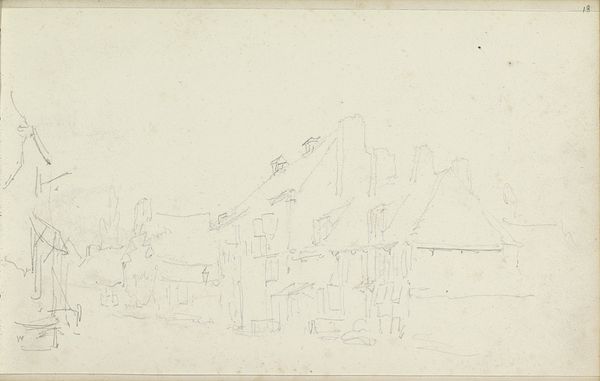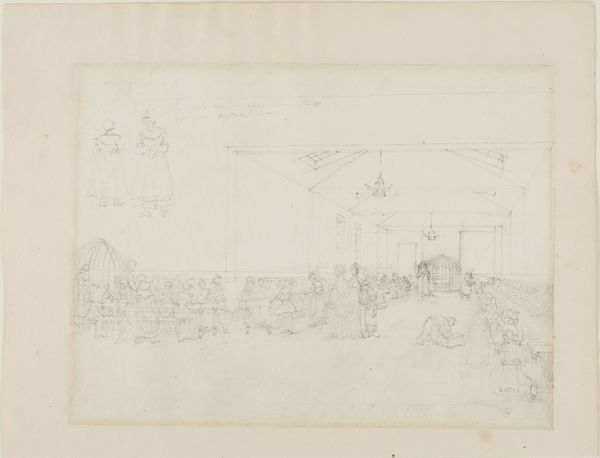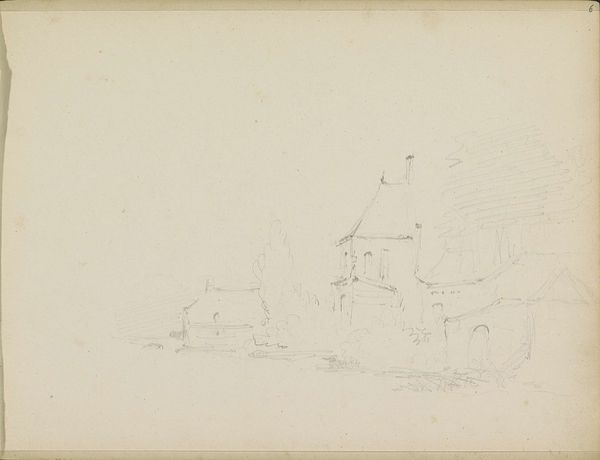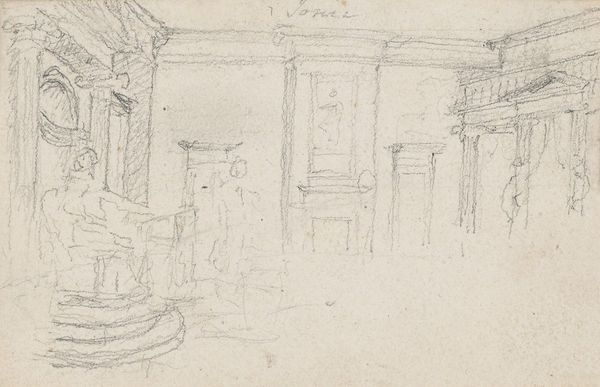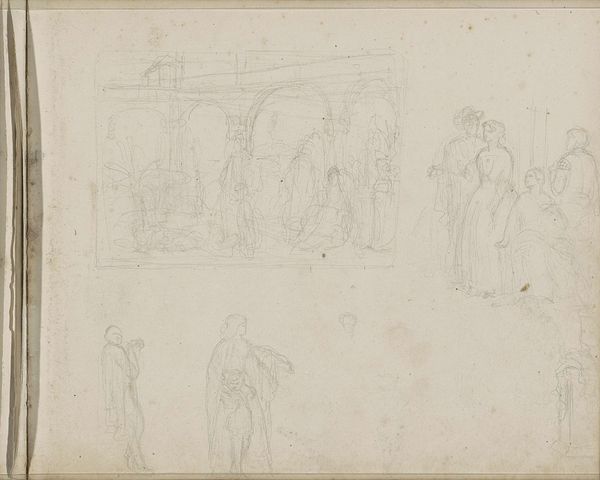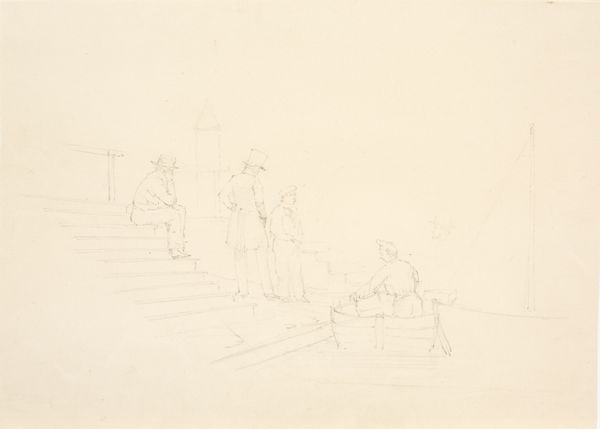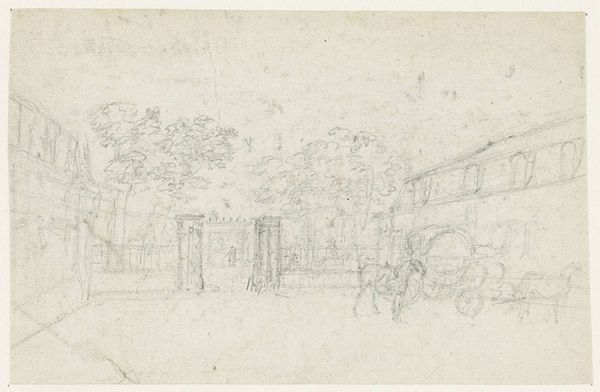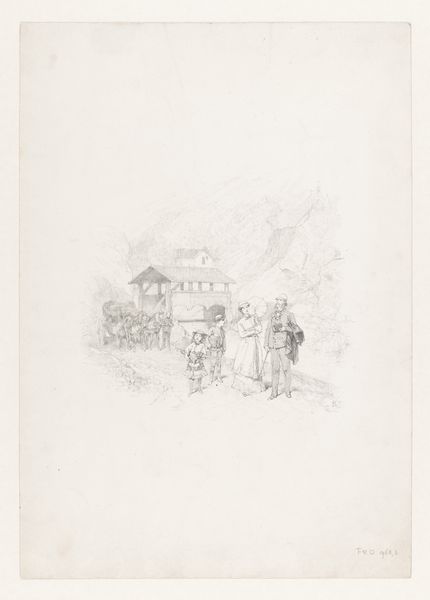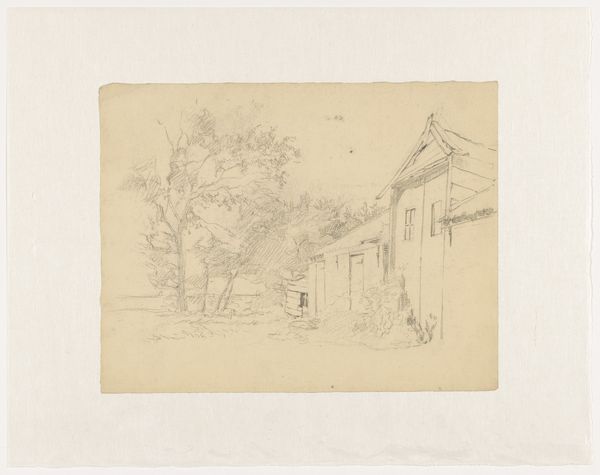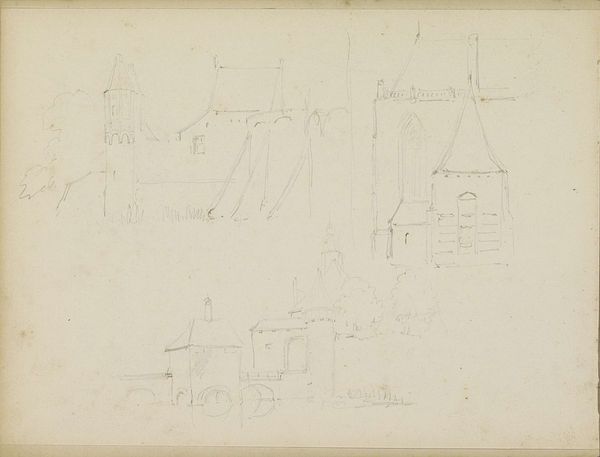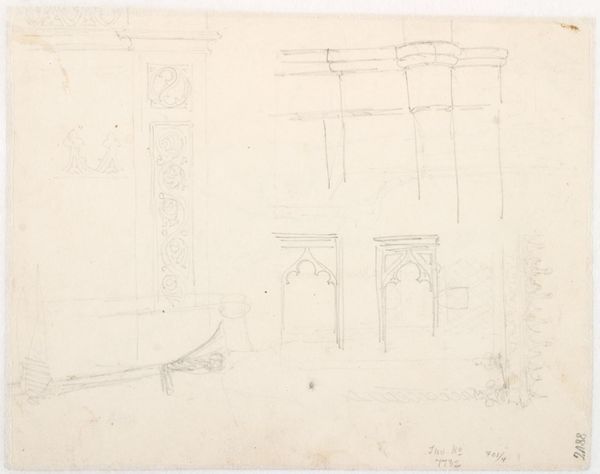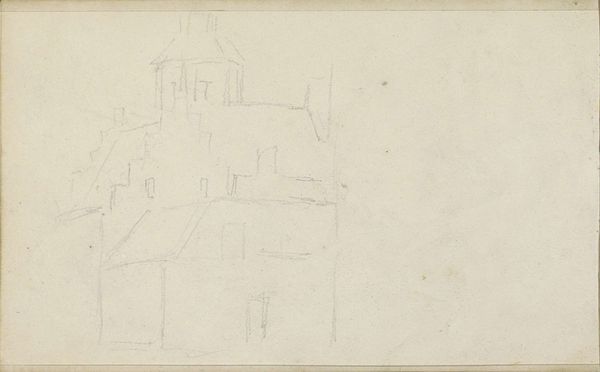
drawing, paper, pencil, architecture
#
drawing
#
figuration
#
paper
#
pencil
#
line
#
architecture
Dimensions: overall: 20.1 x 26.5 cm (7 15/16 x 10 7/16 in.)
Copyright: National Gallery of Art: CC0 1.0
Editor: We’re looking at "Sheet of Architectural and Figure Studies," a pencil on paper work by John Flaxman. There isn't a specific date associated with this piece. The drawing has this understated feel, and seems to be preliminary sketches of both human and architectural forms. What do you see in this piece that speaks to the social or historical context of its creation? Curator: I’m drawn to the interplay between architecture and the human form. Notice how these figures, though lightly sketched, seem to interact with imagined built environments. Flaxman was working during a time of massive social upheaval and revolutionary architectural theory. Could these sketches be questioning established power structures represented by monumental architecture through the placement of the individual figure? What's striking to me is the subtle suggestion of power dynamics at play. Does it make you wonder about the role of architecture in shaping societal behaviours? Editor: That’s fascinating. I hadn't considered it in terms of power dynamics, I was more focused on the simplicity of line. The connection you make to broader historical forces gives it so much more resonance. It also makes me think about whose stories are being told in these architectural spaces – or aren’t being told. Curator: Exactly! Thinking about whose stories are elevated or erased within the frame of architecture itself—who is represented in its visual language? Editor: It almost feels like he’s intentionally blurring the lines, inviting us to question the relationship between these figures and the world they inhabit. It goes beyond just aesthetics, and becomes an exploration of power, identity, and social structures. Curator: Precisely. Perhaps by situating the human form amongst those sharp, drawn lines he offers subtle commentary of those relationships, making visible hierarchies that might otherwise remain unseen. Editor: This has really broadened my perspective. I came in appreciating the lines, but I’m leaving with so much more! Curator: Yes, that is where historical works meet our own modern ways of looking and questioning - to better see the structures in the present that may go unnoticed!
Comments
No comments
Be the first to comment and join the conversation on the ultimate creative platform.

